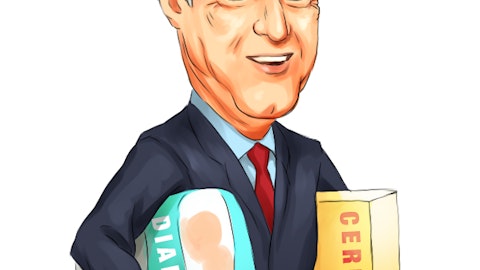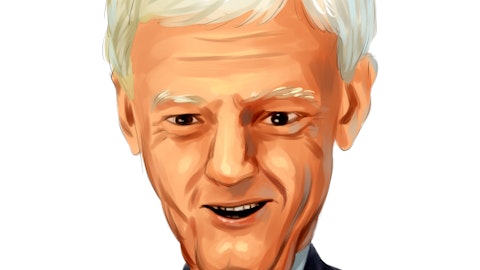4. Park Aerospace Corp. (NYSE: PKE)
Number of Hedge Fund Holders: 8
Dividend Yield: 2.59%
Park Aerospace Corp. (NYSE: PKE) is a Melville-based company that makes and sells advanced composite materials. It was founded in 1954 and is placed fourth on our list of 10 best cheap dividend stocks to buy according to Mario Gabelli. PKE stock has offered investors returns exceeding 27% in the past year. GAMCO Investors has trimmed their stakes in the firm by 13% since December 2020 and now own 693,000 shares in the company worth over $9.1 million, representing 0.08% of their portfolio.
Park Aerospace Corp. (NYSE: PKE) pays a healthy and regular dividend to shareholders despite being moderately priced. In March, the firm declared a quarterly dividend of $0.10 per share, in line with previous.
Out of the hedge funds being tracked by Insider Monkey, New York-based investment firm Renaissance Technologies is a leading shareholder in Park Aerospace Corp. (NYSE: PKE) with 1.4 million shares worth more than $18 million.
In its Q1 2020 investor letter, Huffman Prairie Holdings, an asset management firm, highlighted a few stocks and Park Aerospace Corp. (NYSE: PKE) was one of them. Here is what the fund said:
“We purchased shares in Park Aerospace Corp. (NYSE:PKE) in the second half of 2019. PKE is a growing aerospace business that manufactures advanced composite materials used in jet engines, commercial aircraft, military aircraft, business jets, space vehicles, and other specialized aerospace applications. PKE is a high-quality company run by a talented and well-aligned management team. Customers sign long-term, sole-source contracts with PKE to buy its proprietary composite materials. There was a clear line of sight to healthy growth in the business as contracted customers ramped production.
Fast forward a few months, this thesis clearly didn’t age well. The problem being that about 55% of PKE’s revenue comes from customers building new commercial airplanes. Suffice it to say that airlines will not be purchasing many new planes anytime soon. While PKE’s primary program – the Airbus A320 – may be somewhat insulated, PKE will undoubtedly experience substantial revenue declines in this line of business.
I have had the great fortune to work for some of the smartest small-cap investors operating today. Learning from them helped shape Huffman Prairie and in particular one key aspect of our risk management discipline. We will not invest in companies that combine considerable operational and financial risk. It is typically the ones that combine excessive amounts of both that cannot make it to the other side unscathed.
The aerospace and airline industries are prone to cycles of low (i.e., after 9/11) and high (i.e., the 2010s) demand. As a manufacturer, PKE invests ahead of demand and carries fixed capacity regardless of demand. If demand falls, PKE is left paying for underutilized facilities, machinery, and tooling. The performance and cash flows from operations will suffer and perhaps turn sharply negative.
We were well aware of the operational risk factors above late last year. PKE was deemed to have operational risk but that did not make it unsuitable for investment. PKE counterbalanced its operational risk by carrying almost zero financial risk. At year-end 2019, PKE had no debt and $144 million of cash on its balance sheet – an extraordinary position for a company worth $334 million as a whole at the time. With a Fort Knox balance sheet, PKE mitigates the risk of permanent capital loss and ensures that it will make it to the other side. Instead of facing an existential risk similar to many of its peers, shareholders in PKE can instead look through the nearterm haze and value expected cash flows in the years ahead.
Shares of PKE were down -17.5% in 1Q202 . Reporting such performance is typically not the fodder of investor letters but is noteworthy in this case compared to an average loss of -58.6% for other small cap aerospace OEM suppliers3 . Risk management is an often-overlooked component of running a concentrated fund. We would much rather talk about the companies with 50% or 100% upside! But we remain mindful that the substantial losers matter too and are what often derails the powerful math of compounded returns.”


